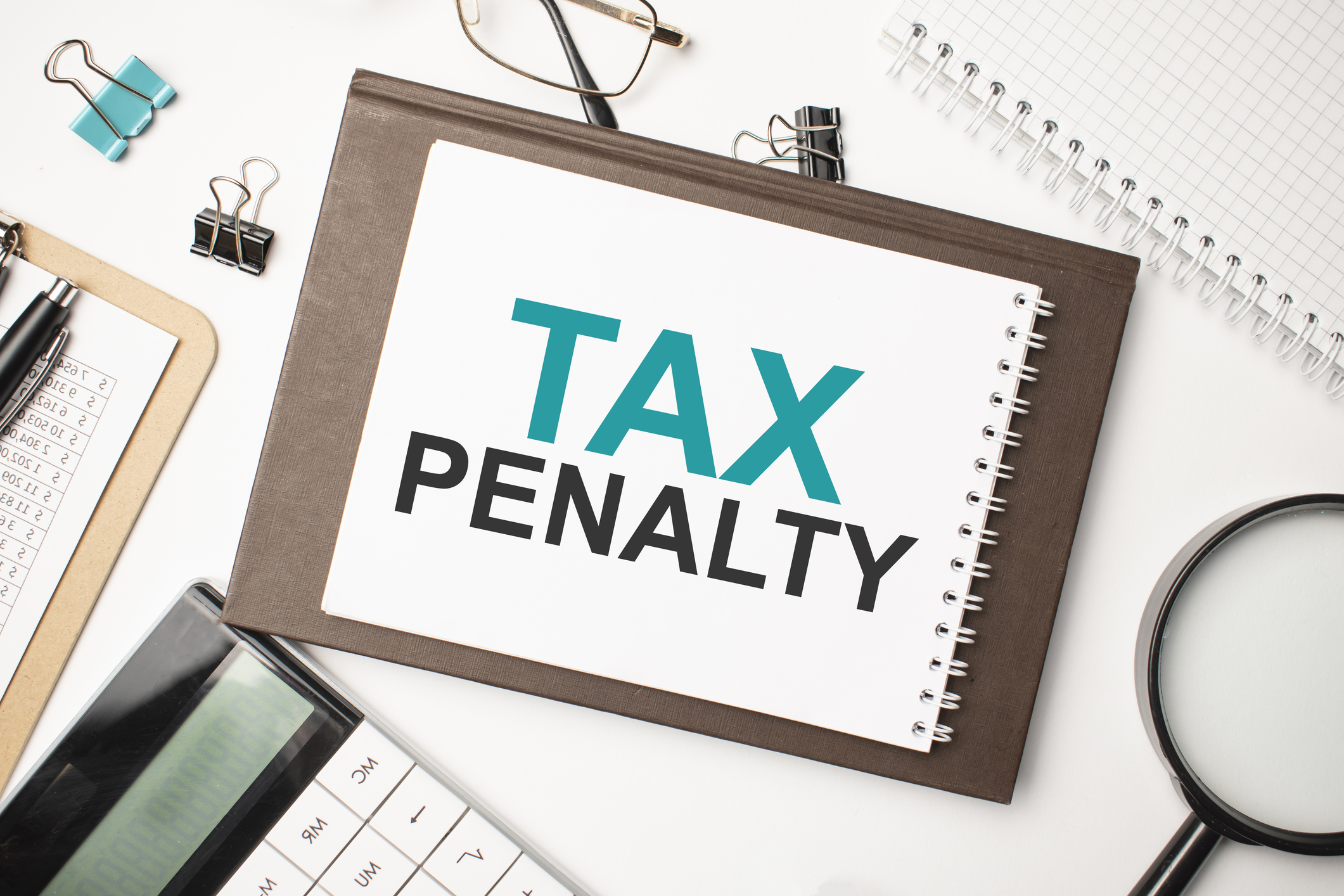IRS First-Time Penalty Abatement: How to Qualify and Apply
When life happens, taxes can fall through the cracks — and the IRS doesn’t hesitate to add penalties that make your balance grow fast. But if this is your first time receiving a penalty, the IRS may be more forgiving than you think. Through the IRS First-Time Penalty Abatement (FTA) program, qualifying taxpayers can have certain penalties removed — often saving hundreds or even thousands of dollars.
Quick Facts: IRS First-Time Penalty Abatement
- The IRS First-Time Penalty Abatement (FTA) program removes failure-to-file, failure-to-pay, or failure-to-deposit penalties for taxpayers with a clean three-year compliance history.
- You can request FTA by phone, in writing, or by submitting IRS Form 843 — and may receive approval in as little as a few weeks.
- To qualify, you must have filed all required returns, paid or arranged payment of your taxes, and avoided major penalties in the past three years.
FTA for Business Owners
For business owners, even one missed deadline or deposit can trigger costly IRS penalties that quickly add up. The IRS First-Time Penalty Abatement program offers a second chance for businesses that have otherwise maintained a strong record of compliance. Whether you missed a payroll tax deposit or filed late due to an unexpected setback, this one-time administrative waiver can help you remove penalties, restore compliance, and keep your operations on track.
What Is IRS First-Time Penalty Abatement?
First-Time Penalty Abatement (FTA) is an IRS administrative waiver that allows eligible taxpayers to remove certain penalties — specifically, failure-to-file, failure-to-pay, and failure-to-deposit penalties — for a single tax period.
In simple terms, the IRS offers FTA as a “clean slate” for taxpayers who have an otherwise good history of compliance. If you’ve been on time for the past three years and missed a deadline once, this program gives you a one-time pass to clear the penalty and move forward.
It’s the IRS’s way of encouraging continued compliance — rewarding taxpayers who generally follow the rules but experienced a one-off issue like illness, miscommunication, or financial hardship.
How the First-Time Abatement Program Works
Part of the IRS Fresh Start Program, First-Time Abatement was created in 2001 to make penalty relief more consistent and fair. The IRS automatically adds penalties when returns are late or unpaid, but they won’t remove them automatically — you have to ask.
If you qualify, the IRS will remove the applicable penalty for one tax year (for individuals) or one quarter (for business payroll taxes). Once granted, this abatement can significantly reduce your total balance due, and in some cases, even generate a refund if you’ve already paid the penalty.

Who Qualifies for the First-Time Penalty Abatement?
To qualify for FTA, you must meet three main requirements:
1. Filing and Payment Compliance
You must have filed — or filed a valid extension for — all required tax returns.
If you owe money, you must either have paid your balance in full or be actively on an IRS payment plan with no missed payments.
The IRS will not approve an abatement if you have unfiled returns or unpaid taxes outside an arrangement.
2. Clean 3-Year Penalty History
You cannot have been assessed any “significant” IRS penalties for the same type of tax return in the past three years.
For example, if you’re requesting abatement for your 2022 Form 1040, you can’t have received failure-to-file or failure-to-pay penalties for 2019, 2020, or 2021.
Small estimated tax penalties generally don’t count against you.
3. The Penalty Type Qualifies for FTA
Not every penalty can be waived under this program. FTA is limited to these types:
- Failure-to-file: When your tax return wasn’t submitted by the deadline.
- Failure-to-pay: When you didn’t pay your tax due by the deadline.
- Failure-to-deposit: For businesses that didn’t deposit payroll or employment taxes on time.
FTA does not apply to accuracy-related penalties, estimated tax penalties, or fraud-related penalties.
Which Penalties Can Be Abated?
Failure-to-File Penalty
This is one of the harshest IRS penalties — typically 5% of your unpaid tax per month, up to a maximum of 25%. If this was your first late filing and you have a good IRS compliance history, you can request a first-time penalty abatement to remove the full amount.
Failure-to-Pay Penalty
This penalty accrues at 0.5% per month, up to 25% of your unpaid balance. The IRS continues to charge this until your tax is paid. With FTA, the penalty portion can be erased — though interest on the unpaid tax will still apply until you pay or set up a payment plan.
Failure-to-Deposit Penalty (Businesses)
Employers can face this penalty for missing or underpaying required federal employment tax deposits. FTA can eliminate this penalty for one quarter if the business meets the clean compliance criteria.
How to Request First-Time Penalty Abatement
You can request FTA in three main ways, depending on your situation and the type of penalty.
1. By Phone (Fastest Method)
If your case doesn’t involve an IRS compliance unit (like audit or collections), you can request first-time abatement over the phone.
Call the number listed on your IRS notice — typically 1-800-829-1040 for individuals or 1-800-829-4933 for businesses.
When calling, be prepared with:
- Your Social Security Number or EIN
- The tax year and penalty in question
- Proof that all other returns are filed
- Confirmation that your payments or installment plan are current
If you qualify, the IRS representative can often remove the penalty immediately and send you a written confirmation within a few weeks.
2. By Submitting IRS Form 843 (Written Request)
If your penalty has already been paid, or if your case involves multiple issues, file IRS Form 843: Claim for Refund and Request for Abatement. This method may take more time, but it’s necessary for more complex cases.
How it works:
- Check the box at the top for “Abatement or refund of penalty.”
- Fill out your personal and tax information (Lines 1–4).
- On Line 7, check “Reasonable Cause or Other Lawful Reason.”
- On Line 8, clearly explain that you’re requesting First-Time Penalty Abatement and reference your clean compliance history.
- Attach supporting documentation — such as IRS notices or payment confirmations.
Mail the form to the address listed on your IRS notice or to the IRS Service Center where you file your return.
See our Form 843 Guide for detailed mailing addresses and documentation examples.
3. Supporting Documentation Tips
While FTA doesn’t require a full reasonable-cause explanation, including documentation can strengthen your request — especially if there’s confusion about your eligibility.
What to include:
- IRS penalty or balance notices
- Payment confirmation or installment plan agreement
- Prior-year filing confirmation letters
- Written correspondence from the IRS (if applicable)
- A written letter explaining your situation and reason for your request
For instructions on writing a penalty abatement letter, read our guide: How To Write a Penalty Abatement Letter to the IRS
4. How Long It Takes
IRS processing time for FTA varies but typically runs 3–6 months. You’ll receive a written notice once the IRS makes a decision. You can check your status by calling the IRS or, if you’re a TaxRise client, we’ll handle follow-ups directly on your behalf and keep you updated every step of the way.
Common Reasons the IRS Denies Abatement
Even qualified taxpayers are sometimes denied FTA because of minor technical issues. Here’s how to avoid the most common pitfalls:
1. Unfiled Returns
All returns must be filed — even if you can’t pay right now. The IRS won’t approve abatement until every required return is in. If you haven’t
2. Outstanding Balances Without a Payment Plan
If you owe taxes but haven’t arranged a payment plan or full payment, the IRS may deny relief. Setting up an installment agreement before requesting FTA can fix this.
3. Prior Penalties Within Three Years
FTA is designed for first-time mistakes. If you’ve had another penalty within the last three years, consider Reasonable Cause Abatement instead. (Add a link to the new page here)
4. Confusing or Incomplete Requests
Missing details, unclear explanations, or mailing to the wrong IRS address are frequent reasons for denial. TaxRise ensures your documentation and form are complete, correct, and routed to the right department.
Can You Request First-Time Abatement More Than Once?
The FTA program applies to one tax period per taxpayer. That means you can’t use it for multiple consecutive years.
However, if three clean years pass after your first use, you may be eligible again. The IRS will look at your new compliance history to determine eligibility.
For ongoing issues or repeated penalties, you might still qualify for Reasonable Cause relief — which can be used multiple times if justified.
Do You Need a Tax Penalty Abatement Lawyer?
You don’t need an attorney to request first-time abatement — but professional representation dramatically improves your chances of success. Typically, you don’t need to hire a lawyer for most tax problems, unless your case reaches US Tax Court. A tax professional such as an enrolled agent or CPA can solve most tax issues, and their fees may be significantly lower. Learn more about when to consider hiring a tax attorney.
TaxRise’s team of licensed tax professionals, enrolled agents, and IRS-certified attorneys handle the process from start to finish. We ensure your eligibility, prepare the right documentation, and communicate directly with the IRS to secure your relief quickly.
If your penalty involves multiple years, complex filings, or an IRS appeal, having a professional team on your side can mean the difference between approval and denial.
How TaxRise Helps You Get Approved
At TaxRise, we specialize in helping taxpayers remove penalties and resolve back taxes. Our experts review your IRS transcripts, compliance history, and financial status to determine whether you qualify for First-Time Abatement or other forms of relief.
When you work with TaxRise, you get:
- A full IRS transcript review to confirm eligibility
- Preparation and submission of your FTA request or Form 843
- Follow-up directly with the IRS for faster decisions
- Guidance on future compliance to prevent penalties from returning
We don’t just fix your penalty — we help protect your financial future.
If You Don’t Qualify for FTA, You Still Have Options
Even if you’re not eligible for first-time abatement, you may still qualify for other forms of penalty relief or debt reduction under the IRS Fresh Start Program.
Reasonable Cause Penalty Abatement
If circumstances beyond your control—such as serious illness, a natural disaster, or reliance on incorrect IRS advice—led to your tax penalty, you may qualify for Reasonable Cause Penalty Abatement. This form of relief allows the IRS to remove penalties when you can show that you made a genuine effort to comply but were prevented by events outside your control. Documentation is key: medical records, insurance claims, FEMA declarations, or IRS correspondence can strengthen your case. By proving that you acted in good faith, you can demonstrate to the IRS that your mistake was an exception—not a pattern.
Learn more about Reasonable Cause Penalty Abatement.
Offer in Compromise (OIC)
The Offer in Compromise (OIC) program lets you settle your tax debt for less than the total amount you owe—giving you a fresh start when full payment would cause financial hardship. The IRS reviews your income, assets, and ability to pay to determine a fair, reduced settlement amount. For many taxpayers, an approved Offer in Compromise can eliminate thousands in back taxes and penalties while stopping aggressive collection actions like levies or garnishments. It’s one of the most powerful tools under the IRS Fresh Start Program for long-term tax relief.
Installment Agreement
An Installment Agreement is an IRS payment plan that allows you to pay off your tax debt through manageable monthly payments that fit your budget. Once the agreement is approved and you stay current on your payments, the IRS pauses collection activity and prevents new penalties from accruing. There are several types of installment plans—ranging from short-term arrangements to extended payment options—depending on your total balance and financial situation. This structured approach helps you regain compliance without overwhelming your finances.
Currently Not Collectible (CNC)
If you’re experiencing serious financial hardship and cannot pay your tax debt without sacrificing basic living needs, you may qualify for Currently Not Collectible (CNC) status. This program temporarily suspends IRS collection actions, including wage garnishments, bank levies, and liens, until your financial situation improves. While interest may still accrue, CNC status gives you critical breathing room to stabilize your income and expenses. During this period, the IRS acknowledges that immediate payment would cause undue hardship—offering a temporary but meaningful form of relief on your path toward financial recovery.
Get a Fresh Start with TaxRise
The IRS First-Time Penalty Abatement program is one of the most powerful — yet underused — opportunities for taxpayers to reduce their overall tax debt.
If you’ve been hit with failure-to-file or failure-to-pay penalties but have a good record of compliance, you may be eligible for full relief. Let TaxRise handle the process for you — from reviewing your transcripts to submitting your request and following up with the IRS. We make it simple, stress-free, and effective.
You’re more than you owe. Schedule your free consultation today to see if you qualify for IRS penalty abatement or other Fresh Start relief programs.
Qualify today for a Fresh Start.
Learn how easy it is to resolve your tax problems.
Frequently Asked Questions
You can request a one-time tax penalty waiver (known as First-Time Abatement) by calling the IRS or submitting a written request. Most taxpayers qualify if they’ve filed and paid on time for the past three years and have corrected their current tax issue. You can make your request by phone, include it with Form 843, or write a formal First-Time Abatement letter explaining your clean compliance history. For best results, attach copies of IRS notices, proof of filing, and payment confirmations. TaxRise can help determine your eligibility and prepare your waiver request from start to finish.
Yes — but only in specific circumstances. The IRS may agree to remove penalties through programs like First-Time Abatement (for one-time mistakes) or Reasonable Cause Abatement (for circumstances beyond your control). Interest, however, is generally only reduced if it resulted from an IRS error or delay. While you can’t “negotiate” penalties like a settlement, a tax professional can communicate with the IRS on your behalf, request applicable abatements, and explore broader Fresh Start Program options — like an Offer in Compromise or Installment Agreement — to help you resolve your full tax balance and move forward confidently.




